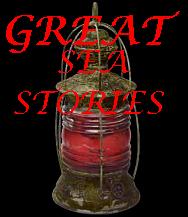Navy Lab Touts Cold Fusion Advance
A U.S. Navy researcher says her lab has produced "significant" new results that indicate cold fusion-like reactions. If the work by analytical chemist Pamela Mosier-Boss and her colleagues is confirmed, it could open the door to a cheap, near-limitless reservoir of energy. That's a big if, however. The announcement at the national meeting of the American Chemical Society comes in the same location -- Salt Lake City -- as one of science's most infamous episodes, the announcement 20 years ago by chemists Stanley Pons and Martin Fleischmann that they had produced cold fusion. Unlike nuclear energy reactors and bombs, which split atoms, the atoms in stars such as the sun fuse together to produce spectacular amounts of energy, so much so that we are warmed by a stellar furnace 93 million miles away. Devising a fusion-based source of energy on Earth has long been a "clean-energy" holy grail of physicists. Pons and Fleischmann claimed to have created fusion reactions in a tabletop experiment, at room temperature. Their claims of producing small amounts of excess heat -- energy -- in their experiments were at first met with excitement, then skepticism and finally derision as other scientists were unable to reproduce the results. Nevertheless, in the years since, a small group of scientists has continued trying to produce fusion reactions at low temperatures. If such experiments did produce fusion reactions, they would generate highly energetic neutrons as a byproduct. These are what Mosier-Boss says her San Diego-based group has found. "If you have fusion going on, then you have to have neutrons," she said. "But we do not know if fusion is actually occurring. It could be some other nuclear reaction." The announcement is based partly on research published by Mosier-Boss' group last year in the journal Naturwissenschaften. In this sense, she has not repeated the mistake of Pons and Fleischmann, who announced their findings before they had been tested by the peer-review process and published in a scientific journal. But that does not mean the results indicate cold fusion, said Paul Padley, a physicist at Rice University who reviewed Mosier-Boss' published work. "Fusion could produce the effect they see, but there's no plausible explanation of how fusion could occur in these conditions," Padley said. "The whole point of fusion is, you're bringing things of like charge together. As we all know, like things repel, and you have to overcome that repulsion somehow." The problem with Mosier-Boss' work, he said, is that it fails to provide a theoretical rationale to explain how fusion could occur at room temperatures. And in its analysis, the research paper fails to exclude other sources for the production of neutrons. "Nobody in the physics community would believe a discovery without such a quantitative analysis," he said. Still, the announcement may turn heads, given its stage at the American Chemical Society's big meeting and the fact that the organization promoted it to science journalists in advance. "It's big," said Steven Krivit, founder of the New Energy Times publication, which has tracked cold fusion developments for two decades. Krivit said the neutrons produced by Mosier-Boss' experiments may not be caused by fusion but perhaps some new, unknown nuclear process. "What we're talking about may be more than anybody actually expected," he said. "We're talking about a new field of science that's a hybrid between chemistry and physics."
The announcement is based partly on research published by Mosier-Boss' group last year in the journal Naturwissenschaften. In this sense, she has not repeated the mistake of Pons and Fleischmann, who announced their findings before they had been tested by the peer-review process and published in a scientific journal. But that does not mean the results indicate cold fusion, said Paul Padley, a physicist at Rice University who reviewed Mosier-Boss' published work. "Fusion could produce the effect they see, but there's no plausible explanation of how fusion could occur in these conditions," Padley said. "The whole point of fusion is, you're bringing things of like charge together. As we all know, like things repel, and you have to overcome that repulsion somehow." The problem with Mosier-Boss' work, he said, is that it fails to provide a theoretical rationale to explain how fusion could occur at room temperatures. And in its analysis, the research paper fails to exclude other sources for the production of neutrons. "Nobody in the physics community would believe a discovery without such a quantitative analysis," he said. Still, the announcement may turn heads, given its stage at the American Chemical Society's big meeting and the fact that the organization promoted it to science journalists in advance. "It's big," said Steven Krivit, founder of the New Energy Times publication, which has tracked cold fusion developments for two decades. Krivit said the neutrons produced by Mosier-Boss' experiments may not be caused by fusion but perhaps some new, unknown nuclear process. "What we're talking about may be more than anybody actually expected," he said. "We're talking about a new field of science that's a hybrid between chemistry and physics."
 The announcement is based partly on research published by Mosier-Boss' group last year in the journal Naturwissenschaften. In this sense, she has not repeated the mistake of Pons and Fleischmann, who announced their findings before they had been tested by the peer-review process and published in a scientific journal. But that does not mean the results indicate cold fusion, said Paul Padley, a physicist at Rice University who reviewed Mosier-Boss' published work. "Fusion could produce the effect they see, but there's no plausible explanation of how fusion could occur in these conditions," Padley said. "The whole point of fusion is, you're bringing things of like charge together. As we all know, like things repel, and you have to overcome that repulsion somehow." The problem with Mosier-Boss' work, he said, is that it fails to provide a theoretical rationale to explain how fusion could occur at room temperatures. And in its analysis, the research paper fails to exclude other sources for the production of neutrons. "Nobody in the physics community would believe a discovery without such a quantitative analysis," he said. Still, the announcement may turn heads, given its stage at the American Chemical Society's big meeting and the fact that the organization promoted it to science journalists in advance. "It's big," said Steven Krivit, founder of the New Energy Times publication, which has tracked cold fusion developments for two decades. Krivit said the neutrons produced by Mosier-Boss' experiments may not be caused by fusion but perhaps some new, unknown nuclear process. "What we're talking about may be more than anybody actually expected," he said. "We're talking about a new field of science that's a hybrid between chemistry and physics."
The announcement is based partly on research published by Mosier-Boss' group last year in the journal Naturwissenschaften. In this sense, she has not repeated the mistake of Pons and Fleischmann, who announced their findings before they had been tested by the peer-review process and published in a scientific journal. But that does not mean the results indicate cold fusion, said Paul Padley, a physicist at Rice University who reviewed Mosier-Boss' published work. "Fusion could produce the effect they see, but there's no plausible explanation of how fusion could occur in these conditions," Padley said. "The whole point of fusion is, you're bringing things of like charge together. As we all know, like things repel, and you have to overcome that repulsion somehow." The problem with Mosier-Boss' work, he said, is that it fails to provide a theoretical rationale to explain how fusion could occur at room temperatures. And in its analysis, the research paper fails to exclude other sources for the production of neutrons. "Nobody in the physics community would believe a discovery without such a quantitative analysis," he said. Still, the announcement may turn heads, given its stage at the American Chemical Society's big meeting and the fact that the organization promoted it to science journalists in advance. "It's big," said Steven Krivit, founder of the New Energy Times publication, which has tracked cold fusion developments for two decades. Krivit said the neutrons produced by Mosier-Boss' experiments may not be caused by fusion but perhaps some new, unknown nuclear process. "What we're talking about may be more than anybody actually expected," he said. "We're talking about a new field of science that's a hybrid between chemistry and physics."



















<< Home